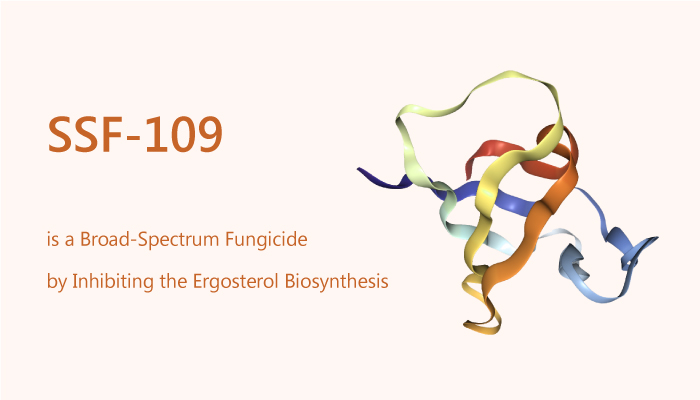The mevalonate pathway consists of a series of enzymes in mammalian cells. Those enzymes can transform acetyl-Coenzyme-A (CoA) to cholesterol ubiquinone, and dolichol via mevalonate.
It has been proved that Isolated rat hepatocytes can synthesize cholesterol from acetate. Since isolated hepatocytes retain the generating system of cofactors, and organized cell structures, they offer many advantages for the study of various metabolic inhibitors. Furthermore, the biosynthesis of cholesterol like that occurring in vivo can exist in those cells.
We will introduce a fungicide, SSF-109 today. And its effect on the growth of fungi and plants and plasma sterol levels will be concisely described in this article. Firstly, the fungi toxicity of this compound is assessed in radial growth tests on PDA-medium. SSF-109 (36 hours) exhibits inhibition of fungal growth of Botrytis cinerea with an EC50 value of 1.1×10-7 M.
In a cell-free assay, SSF-109 shows an inhibitory effect on the synthesis of C4-desmethyl sterols with an IC50 value of 4.7×10-9 M.
Nextly, the inhibitory effect of SSF-109 on mycelial growth of B.cinerea exhibits IC50 and EC50 values of 0.25 μg/ml and 0.45 μg/ml, respectively. SSF-109 is 100 times more effective than Triadimefon.
Botrytis cinerea grows in the presence of a new fungicide SSF-109 accumulates 14a-methylsterol. However, this result does not exist in the control cultures. when the concentration is 0.45 μg/ ml, 14a-methyl sterols accounted for more than 60% of the total sterols. all the above proves that SSF-109 acts as an inhibitor in the 14cc-demethylation step.
Lastly, in order to compare the inhibitory action of SSF-109 on sterol synthesis in animal cells, The researchers studied its effect on cholesterol synthesis in isolated rat hepatocytes.
Freshly isolated hepatocytes are particularly useful for the study of cholesterol synthesis. Within microsomal, mitochondrial, and cytosolic compartments, over 20 steps of enzymic or nonenzymic reactions proceed sequentially.
In the hepatocyte incubation, SSF-109 causes the increasing accumulation of [2-~4C]MVA-derived lanosterol and dihydrolanosterol, whereas it markedly reduces that of cholesterol.
Using isolated rat hepatocytes and a specially devised HPLC system. The inhibition site of SSF-109 in the process of cholesterol synthesis is the 14a-methyl demethylation reaction. Comparative studies with other inhibitors, Triparanol, and AMO-1618, shows that the former inhibits 2,3-0xidosqualene cyclase and the A24(25)-reductase. Whereas the latter inhibits the cyclase activity.
In conclusion, SSF-109 is a broad-spectrum fungicide. It has protective activity against plant disease. SSF-109 inhibits the biosynthesis of ergosterol at the 14α-demethylation step in Botrytis cinerea.

Reference:
NOBORU SHIRANE, et al. Phytochemistry, 29(8), 2513–2520.